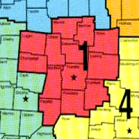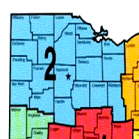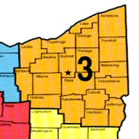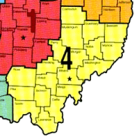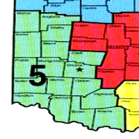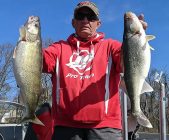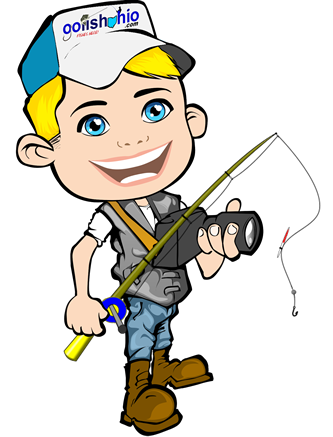Float Tube & Belly Boat Fishing 101 - Accessories & Equipment
There are few float tube accessories that are necessary to complete your fishing outfit. I will cover the necessities I found in my experience: fins, anchors, rods & reels and finally, your outfit. Of course, you will need to personalize all of them – at least the last two – to fit your style and comfort.
Flippers & Fins: Your Propulsion
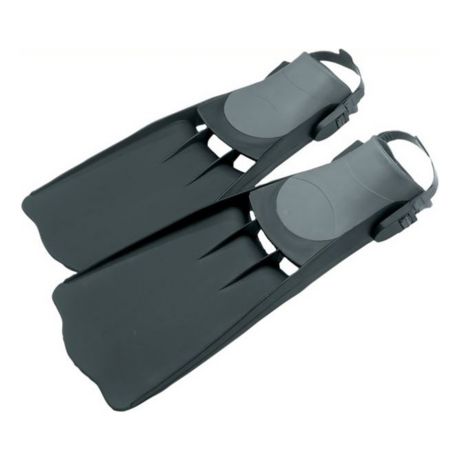
Beyond the boat, your first item on the agenda is propulsion. Flippers are your best bet for float tubes. They are versatile, allowing you to cover area while still having access to all depths of water. I like the type where there is a strap to go around your heel and a ‘pocket’ in which your toes are fully enclosed. Flippers will meet 99% of your boating situations, and I haven’t yet happened across the other 1%. Yet.
Get flippers that fit you a little bit LOOSE. Make certain that you’ll be able to wiggle your toes around – this is very important! If your flippers fit too tightly, then your feet will be the first thing that start to ache, and that is a very uncomfortable feeling.
While this might not seem to be a big problem on the ground, you’ve got to remember that you cannot easily reach your feet on the water – not to take a fin off, or even for a quick rub.
Get the bigger sizes, because in most situations I recommend that you wear water shoes and/or neoprene waders. tight fit flippers will cut off blood circulation to a degree, ending your day early.
Another choice is referred to as “duck fins”. You work them just as if you were walking. When you step forward the fin lays flat against your ankle. When you step backward – like you were walking – the fin flares out and pushes you forward. I tried them once and that was enough for me.
A few quick observations. You’ve got to be relatively vertical in the water for these to work. They don’t push nearly as much water as a set of fins will, and are thereby much less maneuverable in any condition. You can only move effectively going forward. If it happens to break or fall off, it may sink and leave you without a paddle.

Best Choice? Get the Flippers
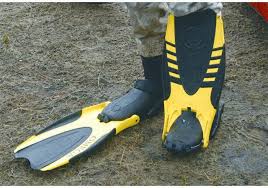
Here’s why you’ll want flippers. Speed, versatility, shallow water performance, and ease of use in cover. A flipper has about 2-3 times the flat area of a duck fin, increasing your speed and also your maneuverability. I can cover the same body of water as a duck fin user in less time and with up to 80% less effort. Which means more time fishing.
Maneuverability is noticeably enhanced. You’ll have the ability to turn completely around with one or two kicks. During a long day on the water, you’ll appreciate the versatility of the flippers. Whereas the duck fins only work in one fashion, you can use flippers and go backwards, forwards, deep, shallow, or sideways. Plus it’s much easier to overcome the wind because you can hold in any position with the flippers. This eliminates the hassle of anchors.
In shallow water, the only way might be flippers. For the duck fins to work, your legs – at least from your knees down – must be pointing down to obtain propulsion. On my leg that turns out to be about 20″. Which means water depth any less than that may present a problem. If you’re face with a big wide mud flat that you want to cross that’s only 15″ deep, it’s always a long kick around the outside. And you simply cannot get up and walk across a mud flat with duck fins on.
With flippers, I’ve crossed flats about 8″ deep. It’s very easy to lean back a little and kick with straight legs just below the surface. Sure, I could go around with less effort anyway, but let’s be honest… I’m in the water for the fishing, not the exercise.
In cover, the flipper has other advantages, among which is they are much more weedless than duck fins. They are slim and slender, and weeds which may catch on your ankle can be easily removed by pointing your toes and giving a few gentle kicks. Try to use duck fins while you kick through an underwater grass bed, or through lily pads, and you’ll discover that there is really no other alternative but a good set of flippers.
As you can see, I’m a big supporter of flippers with belly boating. A really good pair is about $40. Get a quality pair and you will not be disappointed.
Anchors: Yay....or Nay?
 There certainly may be some situations where anchors are important, but for most of the conditions you’ll probably belly boat in, anchors will be more of a nuisance. Since half of you is in the water, a relaxed stroke with your flippers will keep you in the ideal position as long as you want. Belly boats aren’t plush recliners – if you move around more than sit still you’ll find them to be much more comfortable.
There certainly may be some situations where anchors are important, but for most of the conditions you’ll probably belly boat in, anchors will be more of a nuisance. Since half of you is in the water, a relaxed stroke with your flippers will keep you in the ideal position as long as you want. Belly boats aren’t plush recliners – if you move around more than sit still you’ll find them to be much more comfortable.
Also, when you’re hooked that huge bass, what would you do if she turned you around and got tangled up in the anchor line? Or she runs out thirty yards in the opposite direction and gets wrapped up in some lily pads and you don’t have enough anchor line to reach to her?
The stories you’ve heard are true. Bigger fish will drag you around – but that’s part of the FUN! Keep it simple. Consider your own situation. If you think you can do it without an anchor, go without one first. You’ll probably find that you don’t need one. And you’ll find it easier to carry that much less weight!
Rods and Reels - Your Fishing Gear

Choices depend on what you fish for. You’ve got a favorite fish, as well as a favorite rod and reel – so match them up and go fishing! I regularly bass fish, so here’s what I normally take to the fishin’ hole:
1) Medium action 7′ spinning rod + medium light spinning reel with 8# line
2) Medium action 7′ bait casting outfit with 10# line.
An important point – beware of rods with long butt sections, such as those that are normally called flippin’ sticks. Due to the restricted area inside a belly boat, longer handled rods become a nuisance. A rod with a 8″-10″ handle behind the reel is probably the longest that you’ll be able to comfortably use all day or all night long.
A 6′ to 7′ rod is a great all around size. You can use smaller rods, but let me pass along this little tip; When you hook a fish and she’s full of fight, the last place you want that fish thrashing around is next to your boat. Especially with a mouthful of treble hooks on a minnow bait!
Longer rods pose other problems such as getting the line rigged after a break-off, and wind knots or tangles at the tip are frustrating.
Spinning equipment makes it easier to throw lighter weight jigs and other small lures. A bait casting outfit is ideal for throwing spinnerbaits and heavier lures. I normally carry three rods with me (I’ve carried as many as five), but I recommend that you start with one if you are just getting into belly boat fishing.
When you set the hook, sweep your rod to the side. This will eliminate the possibility of a lure coming right at your face or your boat.
What to wear - and why it matters

The belly boat is a stealthy design by itself, and you can increase your effectiveness by simply blending in. Dress in blue or green clothing above the water. Below the water try dressing in green, brown, or black.
Belly boating is perfect summertime activity. Its fine to float tube in swim trunks, shorts or whatever you wear to the beach, but take some precautions to protect yourself from the sun. Being so low to the water decreases your vision at a distance. Therefore, invest in a quality pair of polarized sunglasses. I fish in a wide-brimmed hat as well which eliminates extra glare and helps keep some of the sun off of my face and neck – and a little added bonus is that my head doesn’t get wet when it’s raining!
When the weather is less than perfect, you will want to outfit yourself for protection form more than just the sun, so here are a few tips. To keep from unwanted sensations on your legs (weeds, leeches, etc), wear a pair of running tights or invest in a pair of neoprene waders. These will not only protect your legs from cuts, scrapes and other water hazards, they will keep you warn when the water temperature drops below 70 degrees. A good quality pair of neoprene stocking foot waders is all you’ll need to take advantage of “chilly water” fishing.
When the water is under 70 degrees, it’s cold! If you are belly boating during the day, but especially at night, if the wind starts to blow even briskly you’ll know just how easy it is to get a chill. Dressing properly above and below the water will keep you comfortable and safe while on the water.
Uh-oh. What about flippers and waders? This is why we said get the a little loose. If you know you plan to wear waders, water shoes or even a pair of socks, make sure your flippers fit properly!
Other things to consider…
In colder weather, your belly boat may seem to lose air. It’s just the cold air and being in the cold water. Simply make sure to check the inflation before you put in and you’ll be fine.
By the same token, try not to drive around with your float tube in the car, especially in very hot weather. If you do, the tube will expand, causing stretching or possible failure at some of the seams. In addition, the cover will be subject to undue wear, sun fading, and the possibility of a puncture is increased. Put a bike hook on the wall and keep it in the garage.
Now that you have all of the float tube accessories you need to go fishing or belly boating, stay tuned! Next, we’re going to discuss fishing from your float tube in Float Tube Fishing – Part 3.

